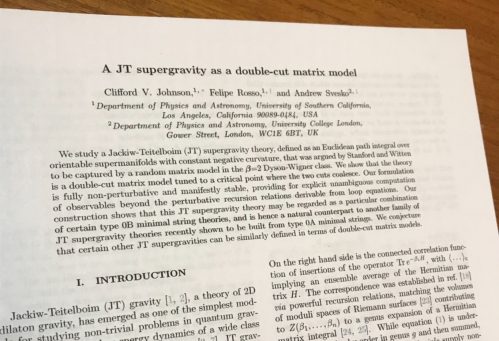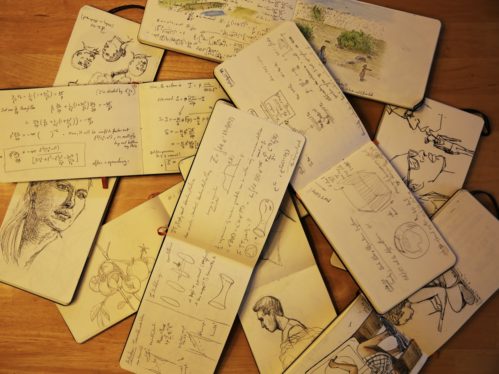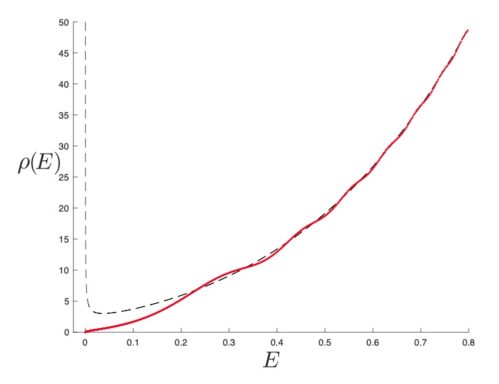Matrices and Gravity
 So I have a confession to make. I started working on random matrix models (the large $latex N$, double-scaled variety) in 1990 or 1991, so about 30 years ago, give or take. I’ve written many papers on the topic, some of which people have even read. A subset of those have even been cited from time to time. So I’m supposed to be some kind of expert. I’ve written extensively about them here (search for matrix models and see what comes up), including posts on how exciting they are for understanding aspects of quantum gravity and black holes. So you’d think that I’d actually done the obvious thing right? Actually taken a bunch of random matrices and played with them directly. I don’t mean the fancy path integral formulation we all learn, where you take N large, find saddle points, solve for the Wigner semi-circle law that the Dyson gas of eigenvalues forms, and so forth. I don’t mean the Feynman expansion of that same path integral, and identify (following ‘t Hooft) their topology with a tessellation of random 2D surfaces. I don’t mean the decomposition into orthogonal polynomials, the rewriting of the whole problem at large $latex N$ as a theory of quantum mechanics, and so forth. No, those things I know well. I just mean do what it says on the packet: close your eyes, grab a matrix out of the bag at random, compute its eigenvalues. Then do it again. Repeat a few thousand times and see that all those things in the data that we compute those fancy ways really are true. I realized the other day that in 30 years I’d never actually done that, and (motivated by the desire to make a simple visual illustration of a point) I decided to do it, and it opened up some wonderful vistas.
So I have a confession to make. I started working on random matrix models (the large $latex N$, double-scaled variety) in 1990 or 1991, so about 30 years ago, give or take. I’ve written many papers on the topic, some of which people have even read. A subset of those have even been cited from time to time. So I’m supposed to be some kind of expert. I’ve written extensively about them here (search for matrix models and see what comes up), including posts on how exciting they are for understanding aspects of quantum gravity and black holes. So you’d think that I’d actually done the obvious thing right? Actually taken a bunch of random matrices and played with them directly. I don’t mean the fancy path integral formulation we all learn, where you take N large, find saddle points, solve for the Wigner semi-circle law that the Dyson gas of eigenvalues forms, and so forth. I don’t mean the Feynman expansion of that same path integral, and identify (following ‘t Hooft) their topology with a tessellation of random 2D surfaces. I don’t mean the decomposition into orthogonal polynomials, the rewriting of the whole problem at large $latex N$ as a theory of quantum mechanics, and so forth. No, those things I know well. I just mean do what it says on the packet: close your eyes, grab a matrix out of the bag at random, compute its eigenvalues. Then do it again. Repeat a few thousand times and see that all those things in the data that we compute those fancy ways really are true. I realized the other day that in 30 years I’d never actually done that, and (motivated by the desire to make a simple visual illustration of a point) I decided to do it, and it opened up some wonderful vistas.
Let me tell you a little more. […] Click to continue reading this post










